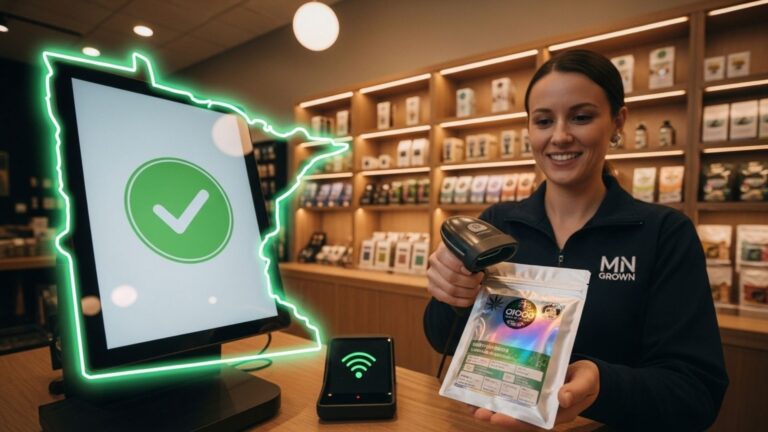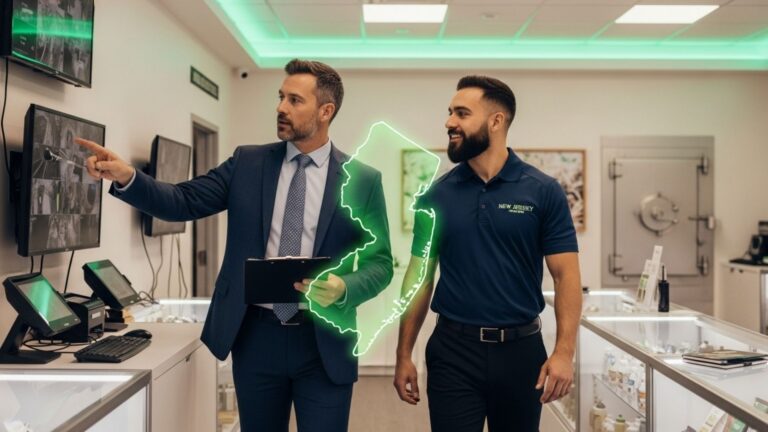Introduction: Building Compliance with Minnesota Cannabis Inventory Management
Running a cannabis dispensary in Minnesota demands precision in tracking every gram of product from arrival to sale or disposal. Effective Minnesota cannabis inventory management and compliant waste disposal are critical to meeting the Office of Cannabis Management (OCM) regulations under the 2024 Minnesota Statutes on Cannabis. By integrating with Metrc, the state’s seed-to-sale tracking system, and following strict protocols, you can prevent diversion, protect the environment, and maintain your license. This guide details how to manage inventory and waste to ensure compliance and operational success.
Understanding Minnesota’s Inventory and Waste Regulations
The OCM enforces stringent rules to ensure accountability and environmental responsibility:
- Seed-to-Sale Tracking: All cannabis products must be tracked via Metrc using unique identifiers (e.g., barcodes or RFID tags).
- Waste Disposal: Nonhazardous cannabis waste must be rendered “unusable and unrecognizable” before disposal, per Minn. Rule 9810.1200, Subp. 3.
- Secure Storage: Products and waste must be stored in locked, access-controlled areas.
- Documentation: All inventory and waste activities must be logged in Metrc and available for OCM inspections.
Non-compliance risks fines, license suspension, or revocation. Mastering Minnesota cannabis inventory management is the foundation of a compliant dispensary.
1. Integrate a Metrc-Compliant Inventory System
A robust inventory system is the backbone of compliance:
- Metrc Integration: Your point-of-sale (POS) system must sync with Metrc in real-time to track products from receipt to sale or disposal. Minnesota mandates Metrc for all licensed cannabis businesses.
- Unique Identifiers: Scan and log unique package IDs (barcodes or RFID tags) for every product upon receipt.
- Real-Time Updates: Ensure your system updates instantly for receipts, sales, returns, or waste designation to match physical inventory.
For example, a dispensary might use software like Dutchie or BioTrack to streamline Metrc integration. Visit Metrc’s Minnesota page for setup details.
2. Establish Rigorous Receiving Procedures
Prevent discrepancies at the point of delivery:
- Verify Manifests: Check that incoming shipments match the transporter’s manifest for product types, quantities, and IDs. Document any discrepancies and report to the OCM immediately.
- Log in Metrc: Record all received products in Metrc and your POS system upon arrival.
- Secure Receiving Area: Process deliveries in a surveilled, access-controlled area to prevent theft.
Clear receiving protocols ensure accurate Minnesota cannabis inventory management from the start.
3. Conduct Regular Inventory Audits
Consistent audits maintain accuracy and demonstrate compliance:
- Cycle Counts: Perform daily counts for high-volume items, weekly for categories, or monthly for full inventory.
- Reconcile Records: Compare physical counts with Metrc and POS data after each audit.
- Report Discrepancies: Investigate and document any variances (e.g., shrinkage or overages) and report to the OCM within the required timeframe.
Regular audits catch errors early and reinforce compliance. What’s your audit strategy? Share in the comments!
4. Secure Inventory Storage
Protect your inventory from theft or unauthorized access:
- Locked Storage: Store products in reinforced vaults or locked backstock areas when not on display.
- Access Controls: Limit storage access to trained staff, using electronic keycards with audit trails.
- Organized Layout: Use labeled shelving and logical placement to simplify counts and reduce errors.
Secure storage is a key component of Minnesota cannabis inventory management.
5. Manage Cannabis Waste Compliantly
Proper waste disposal prevents diversion and ensures environmental compliance:
- Render Unusable: Grind cannabis waste and mix with non-cannabis materials (e.g., soil, kitty litter) to make it unrecognizable, per Minn. Rule 9810.1200.
- Secure Waste Storage: Store processed waste in locked containers until disposal.
- Document in Metrc: Log waste type, quantity, rendering method, and disposal date.
- Partner with Licensed Vendors: Use OCM-approved waste management companies for final disposal.
Follow Minnesota Pollution Control Agency guidelines for environmental compliance.
6. Adopt Sustainable Waste Practices
Go beyond compliance with eco-friendly practices:
- Recycle Non-Cannabis Waste: Separate recyclable materials like packaging or glass.
- Use Eco-Friendly Packaging: Opt for biodegradable or recyclable materials.
- Minimize Waste: Optimize inventory to reduce unsellable products.
Learn more about sustainable practices in our blog on eco-friendly cannabis operations.
Conclusion: Succeed with Cannabis Accounting and Compliance
Effective Minnesota cannabis inventory management and waste disposal are non-negotiable for maintaining your dispensary’s license and reputation. By integrating with Metrc, establishing rigorous procedures, conducting regular audits, securing storage, and managing waste compliantly, you build a trusted, sustainable operation. Pairing these efforts with expert Cannabis Accounting ensures financial and regulatory compliance.
✍️ By Daniel Sabet, Cannabis CFO & Financial Advisor at @GreenGrowthCPAs. Daniel advises cannabis operators nationwide on finance, compliance, and strategy.




